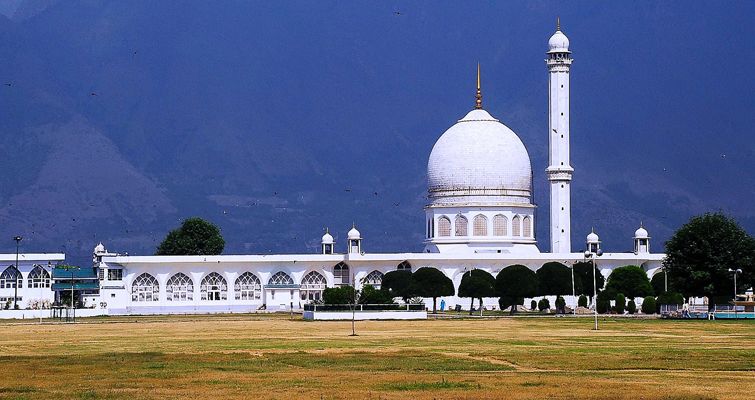
The Hazratbal Shrine or Dargah Sharif is in Hazratbal, Srinagar, Jammu and Kashmir, India. It contains a relic, the Moi-e-Muqqadas, widely believed to be the hair of Prophet Muhammad. The shrine's name is a combination of the Persian word Hazrat (lit. 'respected') and the Kashmiri word bal (lit. 'place'). The shrine is on the northern bank of the Dal Lake in Srinagar and is Kashmir's holiest Muslim shrine The shrine contains strands of what is believed by many Muslims to be the hair of Prophet Muhammad. The relic was first brought to Kashmir by Syed Abdullah, a purported descendant of the Prophet who left Medina and settled in the South Indian city of Bijapur in 1635, at a time when the Mughal Empire was rapidly expanding across India. Following Abdullah's death, his son Syed Hamid inherited the relic. The region was conquered by the Mughals shortly afterward, and Hamid was stripped of his family estates. Finding himself unable to care for the relic, he sold it to Khwaja Nur-ud-Din Eshai, a wealthy Kashmiri businessman. However, when the Mughal emperor Aurangzeb was informed of the holy relic's existence and transfer, he had it seized and sent to Sufi mystic Mu'in al-Din Chishti's shrine Ajmer, and imprisoned Eshai in Delhi. Later, Aurangzeb decided to return the relic to Eshai and allow him to take it to Kashmir. However, Eshai had already died while imprisoned. By 1700, the relic had been transported to Kashmir, along with the body of Eshai. Inayat Begum, the daughter of Eshai, became the custodian of the relic and established the Hazratbal Shrine. Since then, her male descendants have been caretakers of the relic at the mosque. Begum's male descendants belong to what is known as the Banday family. As of 2019, three main members care for the holy relic. The caretakers of the shrine are known as Nishandehs. The eldest male heirs of the previous Nishandeh continue displaying the relic when their predecessor dies.